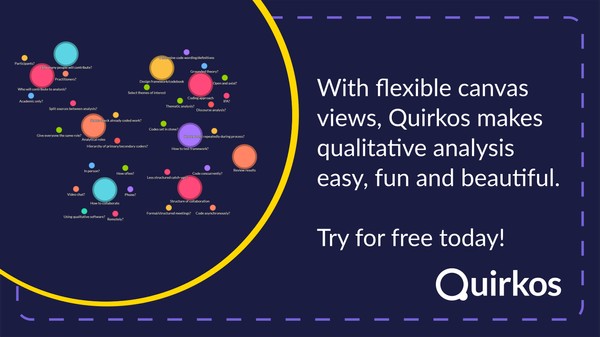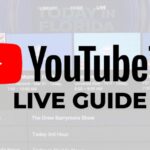Interviews are a cornerstone of qualitative research, frequently cited in studies as “in-depth, semi-structured interviews with key informants.” But what does this entail practically? How deep is “in-depth,” and how structured are “semi-structured” interviews? This guide provides a comprehensive overview of designing effective interview guides.
Understanding Qualitative Interviews
An “in-depth” qualitative interview generally involves a one-on-one conversation focused on a specific topic, explored in detail. While resembling a discussion, these interviews, often lasting around an hour, have a clear purpose. As sociologist Burgess (2002) noted, they are “conversations with a purpose.”
Qualitative vs. Quantitative Approaches
Qualitative interviews differ significantly from quantitative surveys. They aim for detailed, nuanced responses, acknowledging individual experiences rather than seeking a “one-size-fits-all” answer. While a rigid “research protocol” isn’t used, a flexible approach is adopted, ensuring “the same general areas of information are collected from each interviewee,” as MacNamara (2009) suggests. This balances focus with adaptability.
Types of Qualitative Interviews
Turner (2010) outlines three types of qualitative interviews:
- Informal Conversation (unstructured)
- General Interview Guide (semi-structured)
- Standardized Open-Ended (structured)
This guide focuses on the “interview guide” approach, a balanced middle ground.
The Qualitative Interview Guide: Your Roadmap
An interview guide serves as a “cheat-sheet” for the interviewer, listing questions and topics to cover. It’s not a script to be read verbatim but an aide-mémoire. Silverman (2013) emphasizes that interviewers should use prepared questions as a guide, encouraging departures and allowing for unexpected but relevant topics to emerge. Sections that don’t apply to the participant can be omitted.
Examples of Semi-Structured Interview Guides
Finding examples of interview guides in published research can be challenging. They typically consist of a list of short questions and follow-up prompts, grouped by topic, generally totaling around a dozen.
Sample Qualitative Interview Questions
The Qualitative Researcher Journeys project provides an open-source dataset with real qualitative interviews. Example questions from their qualitative interview guide include:
- What kind of researcher are you?
- In what ways has that changed since you started your career?
- What was your first piece of qualitative research about?
- What did you learn from doing that?
- What’s your favorite methodological approach?
- Have you ever taught qualitative research?
- Do you teach qualitative research now?
- To whom did/do you teach qualitative research?
- Which aspects did/do you teach?
- What did/do you most enjoy about it?
- What did/do you find challenging?
- What do students most enjoy when learning?
- What do they find challenging?
- Do you have any funny stories that you like to tell others? Why that story?
- What (if any) cautionary tales do you use?
- Are there any experiences that you avoid sharing with students? Why is that?
- If you do not teach Qualitative Research, why is that?
- Is qualitative research a common paradigm in your department?
- What’s that like for you as a researcher?
- As a teacher?
- How have things changed since you first started researching?
- How have you changed since you first started?
- What do you do differently now?
- Are there any things that you find easier than others?
- Which part of the research process is your favorite?
- If you were to give your younger self a piece of advice what would that be?
- Anything else you want to say or have heard through this piece of work
9 Top Tips: How to Design an Interview Guide
Here are nine key tips for crafting an effective semi-structured interview guide:
-
Open-Ended, Relevant, and Respondent-Focused Questions: Ensure your questions are open-ended (avoiding yes/no answers), directly address your research questions, and are phrased in a way that resonates with your respondents. Avoid jargon unless your participant is an expert. Avoid leading questions that suggest a specific interpretation.
-
Analytical Approach Alignment: Design questions that align with your planned analysis method. Narrative analysis benefits from questions encouraging storytelling, while Interpretative Phenomenological Analysis (IPA) requires questions focusing on interpretations of experiences.
-
Include Optional Follow-Up Questions with Prompts: Prepare optional follow-up questions using prompt words to encourage deeper exploration of relevant topics. For example, “When did you first visit the doctor?” could have prompts like “Why then?”, “Were you afraid?”, or “Did anyone go with you?”.
 A hand writing optional prompts in a notebook, suggesting detailed exploration of specific issues during an interview.
A hand writing optional prompts in a notebook, suggesting detailed exploration of specific issues during an interview. -
Flexibility in Question Order: Group your guide into topics with related questions, but be flexible with the order. Listen actively to the interviewee and connect their responses to other topics. For example, if someone mentions feeling isolated at the doctor’s, and you have a topic on their experience with the doctor, ask, “Did your doctor make you feel less isolated?”
-
Master Your Interview Guide: Know your interview guide inside and out, in any sequence. This allows you to ask questions comfortably in different orders, maintaining conversational flow. Keep a printed copy for reference, note-taking, and to reduce intimidation for the interviewee.
-
Aim for Natural Conversation: While appearing natural, the interview shouldn’t be an everyday conversation (Legard, Keegan, and Ward, 2003). Build rapport and encourage open responses through relaxed discussion. Make the first question easy to ease the participant. Respond to their questions naturally, but avoid sharing potentially leading opinions.
-
Collaborate with Your Research Team: Seek feedback and suggestions from colleagues or supervisors well in advance of your first interview. Seasoned interviewers can provide valuable insights on wording and structure.
-
Adapt and Document Changes: Revise your interview guide as you collect data, especially if new insights emerge. Keep track of all versions and which respondents were interviewed with each version.
-
Time Management and Prioritization: Test the timing of your questions to ensure you can cover the necessary detail. Prioritize questions and have “lower priority” questions that can be dropped if time is limited. Aim for a concise, one-page guide.
Semi-structured interviewing is a challenging skill that improves with practice. Avoid relying too heavily on the guide and reading it verbatim. Treat it as a flexible tool to guide the conversation and explore interesting revelations. By mastering these techniques, you can collect rich research data that is both insightful and engaging to analyze.
Don’t forget to explore the references linked above and the numerous excellent articles and textbooks on qualitative interviews. Software like Quirkos can also aid in making the research process more engaging and visual, offering a free trial. Resources like “10 tips for qualitative interviewing,” “transcribing qualitative interviews and focus groups,” and “how to make sure you get good recordings” are valuable resources.
